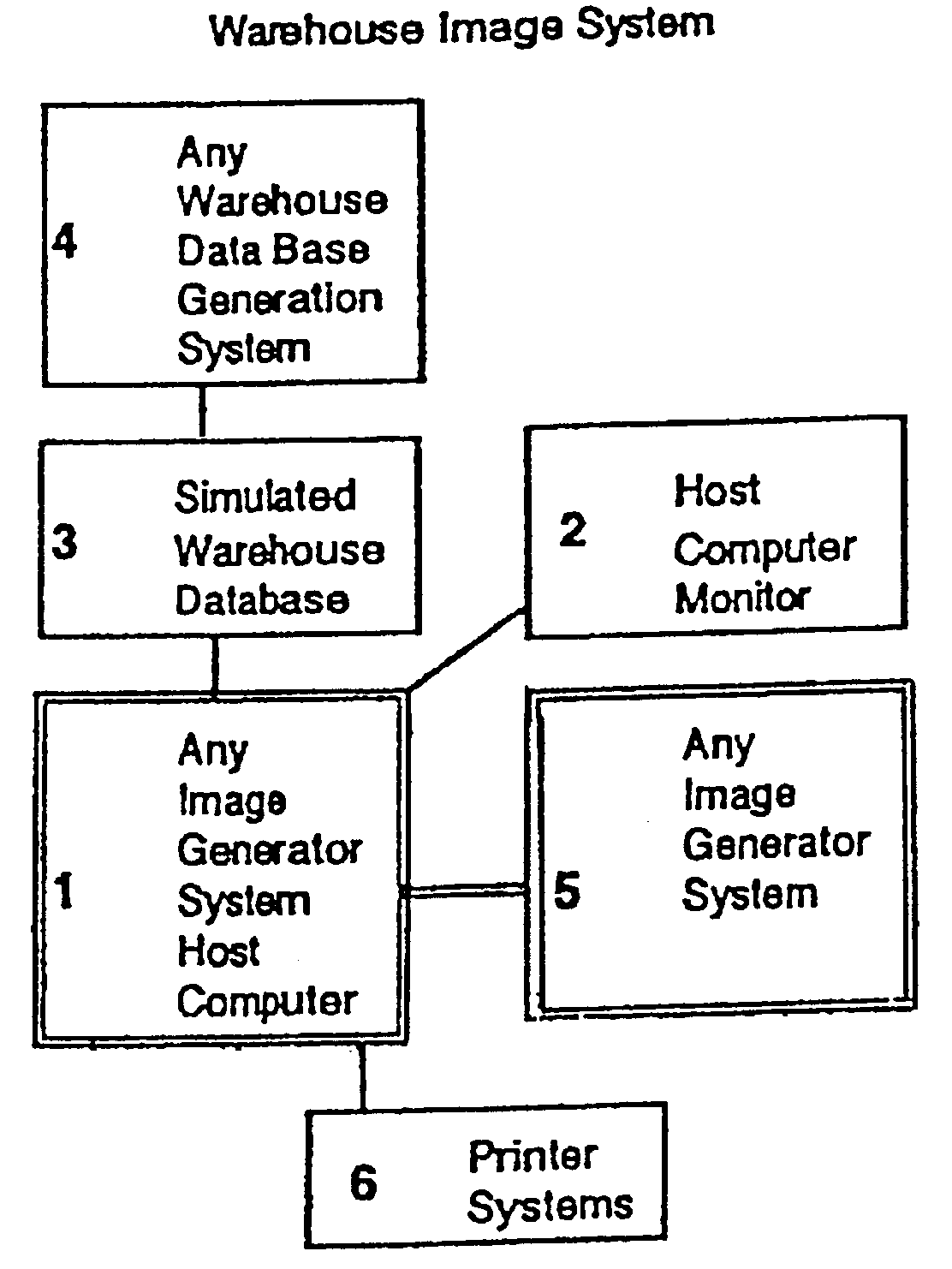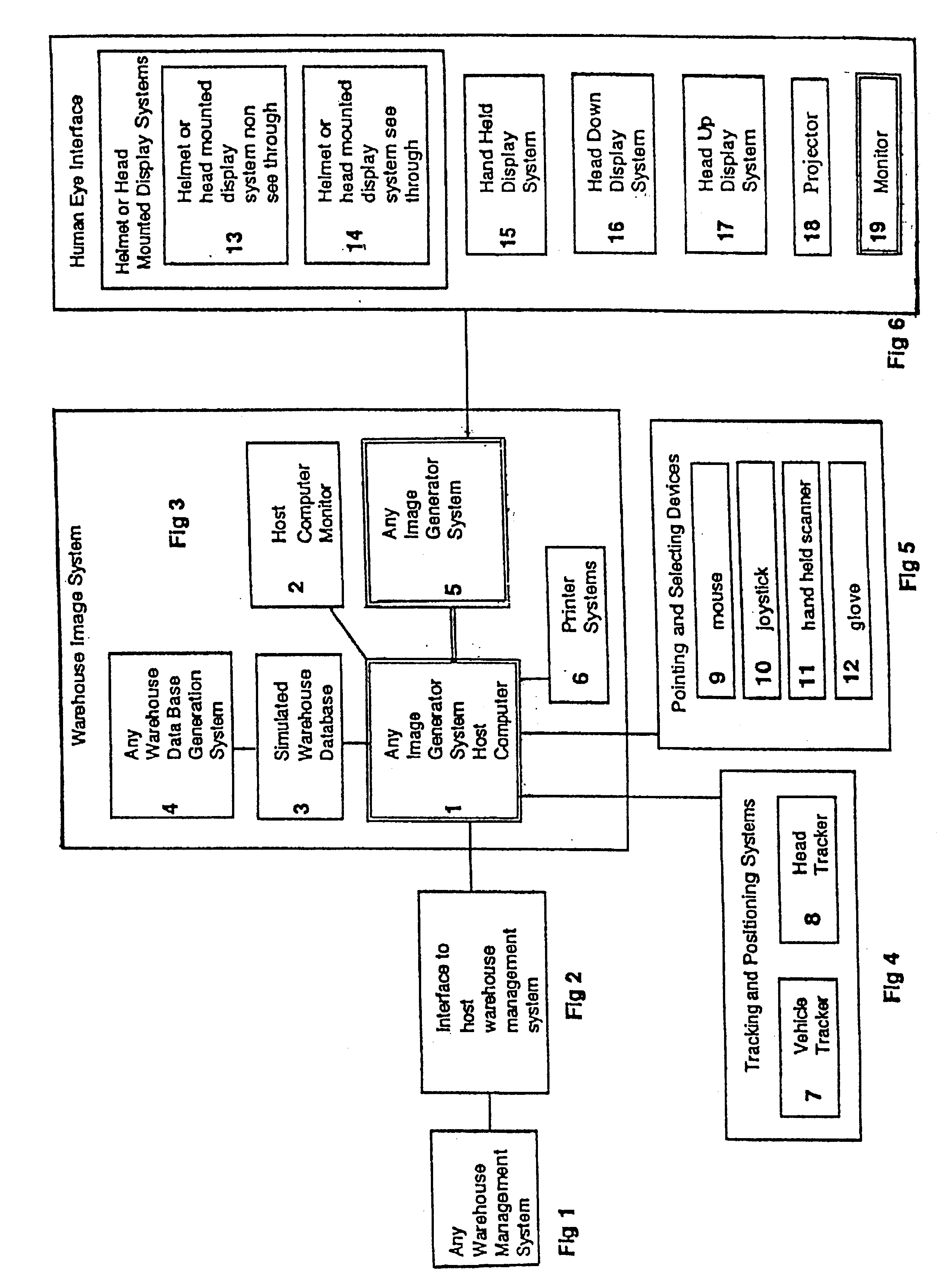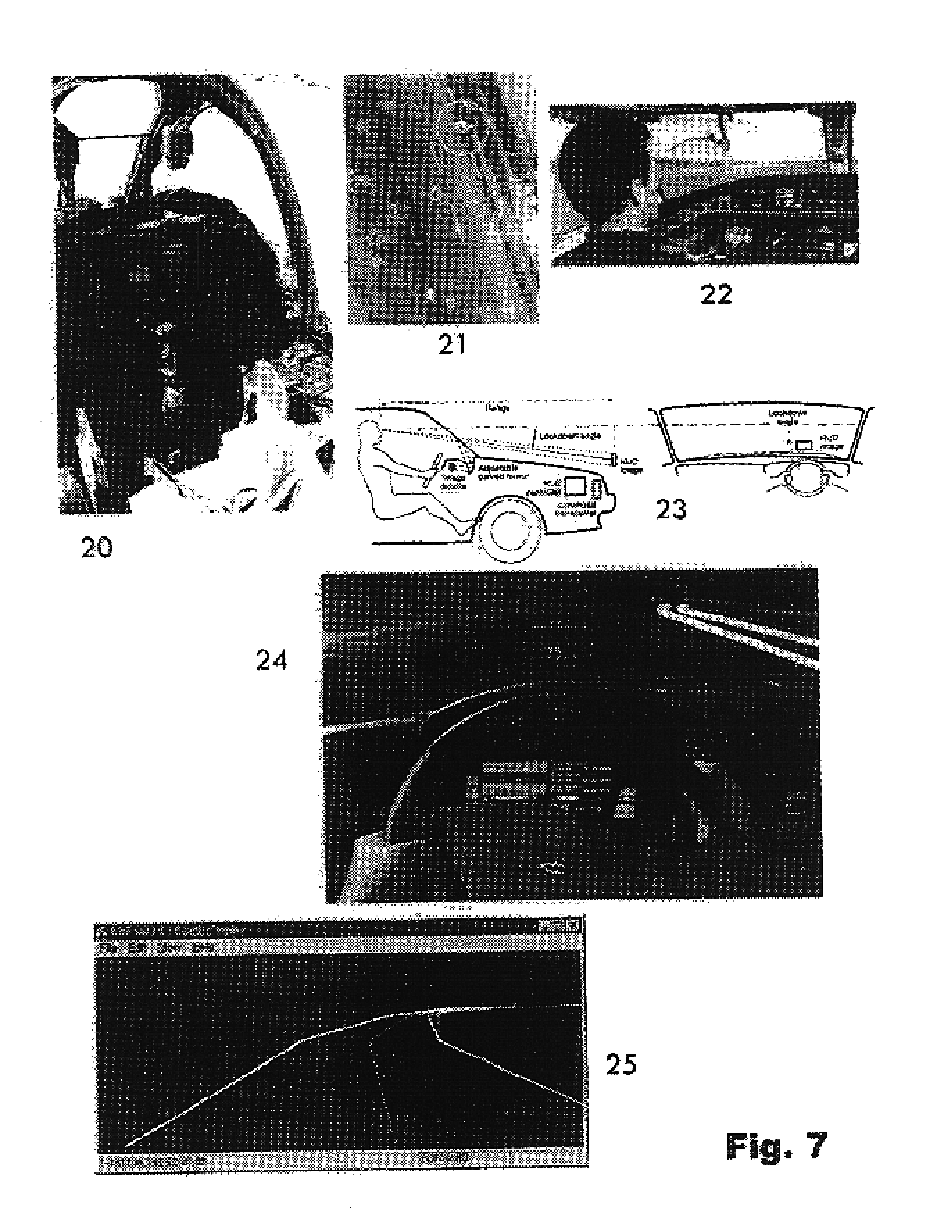However, both of these methods are complex, confusing and inefficient.
Warehouse managers have difficulty relying solely on their own memory and / or a stock location system to keep track of
stock keeping unit (SKU) locations and available space to place them--especially in the high volume of stock in modern warehouses.
Even with two dimensional maps of the warehouse, limited success is achieved due to the dynamic three dimensional nature of a warehouse.
Excessive amounts of paperwork produced by
inventory data can sometimes confuse workers, even though they are necessary for the management of warehousing.
Recently, with the industrial revolution, warehouses have expanded into square miles, and the copious quantities of goods that are processed today have become increasingly difficult to manage with human memory techniques and a stock location naming system.
Even the most skilled warehouse manager has difficulty in keeping track of locations of stock and available spaces.
Computerized WMS presently do not provide any other way of visualizing a warehouse besides using naming methods based on stock
location systems.
The naming conventions used in these WMS make the entire WMS difficult to use, maintain, and fully understand.
This difficulty also limits WMS users to use any WMS to its fullest capabilities.
Which in turn also limits the WMS designer from conceiving of new capabilities.
A
numbering system based on a naming convention consisting of warehouse areas and stock locations that are placed on several sheets of paper or monitor fails to quickly and effectively convey this three dimensional SKU location information to the human mind as is needed in the complex and dynamic three dimensional optimum real time environment of warehousing.
When very large number of locations must be accounted for very quickly, this process becomes tedious, slow and confusing.
The numbers and letters that describe a location of stock or an available space to place goods are difficult to quickly
decipher by even the most skilled warehouse worker especially when it needs to be done accurately and efficiently each time.
The naming method based on a written stock location system is very
time consuming, difficult, and costly to labor hours, costly to warehouse building space etc.
A number based on a stock location naming system fails to quickly and effectively convey this three dimensional SKU location information to the human mind as is needed in the complex and dynamic environment of warehousing.
These programs have greatly advanced the warehousing industry, modernizing it with available technology; however, these have been limited in delivering location information as a
warehouseman must first read numbers and letters then interpret it into three dimensions.
These lists are still confusing even when a user is interpreting them at the stock site.
These WMSs have not fully addressed the needs of the warehousing and logistics industry.
Even with the added benefits of two dimensional, readable query capability that is computerized many opportunities for error occur, costing the industry enormous amounts of money.
The amount of labor time that is wasted, the misallocation of space, causing a new building to be constructed the needs of consumers are not met on time.
These systems increase productivity by supplying this information while a warehouse worker is performing a tasks however, they only provide limited information within the time necessary to perform daily warehousing functions.
This is an impossible task to do in words with the time given to perform daily warehousing.
Although labor has been reduced and efficient stacking methods have emerged, these advancements have come by an increase in cash requirements and a lack of dynamism.
However, since these are animations, each picture needs a large amount of time to create.
So within these visual scenes, one does not have the capability to choose what to see within the presented visual.
Due to this limitation, the images are not capable of being instantaneously correlated with real warehouse events and truly be effective.
These
non real time warehouse simulations have not been integrated into warehouse management systems.
It's
non real time form provides a limited amount of information, preventing it from performing other warehousing functions.
a. Locating outdated and obsolete inventory. Locating current inventory without a problem of causing surplus stock production and wasteful redundant expenses.
b. Identifying available space within the warehouse and avoiding new warehouse construction. (Space is lost and wasted within partially empty bins that cannot be seen). Identifying space with accuracy according to precise three dimensional information as well as other parameters such as
accessibility. Packing methods that optimally conserve available space.
c. Easily and quickly tracking stock movements that allow for faster delivery and an accurate system of handling customer returns.
d. Having the instant knowledge of the location of stock and its available space on a global basis.
e. Training warehouse workers in one language and in multiple languages in a short amount of time.
f. Control over manipulation of stock.
The time taken to visually inspect the warehouse to ensure that SKUs are in the proper place by visually inspecting remote warehouses by organization leaders is extremely costly and
time consuming).
Often trucks run empty due to non coordination of industry--when they could run full.
In complex scenarios or at high speeds the HDD is not sufficient for
safe operation.
However, for other
flight operations, audio systems take too long to communicate vital data in time for the
pilot to effectively respond.
When situations occur that require human judgement these automatic and
robot like systems cause errors and inefficiencies to occur.
Fully automated systems are expensive to purchase and expensive to maintain.
It remains difficult to replace the
human brain in this industry.
Often trucks run empty due to non coordination of industry--when they could run full.
This is due to the extra time that the computer has to draw a more complex scene.
 Login to View More
Login to View More  Login to View More
Login to View More 


